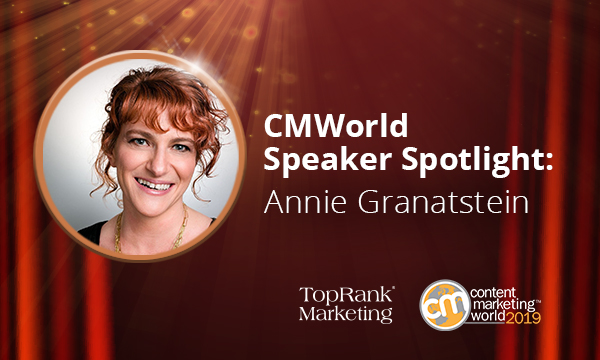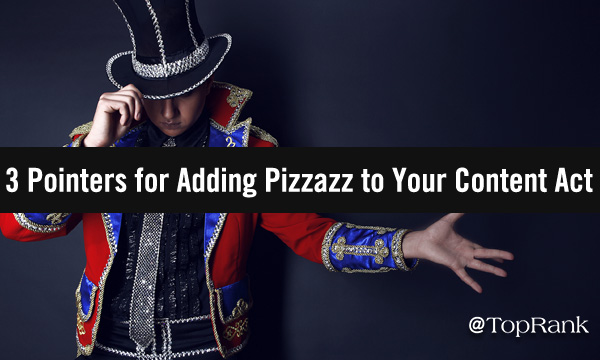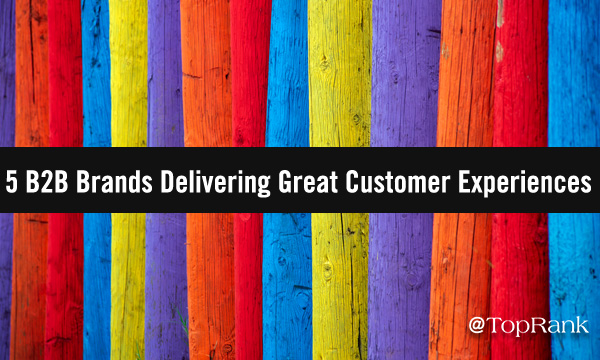

Today’s B2B customers expect more B2C-like experiences, and here are five brands delivering great customer experiences that go far beyond the tired tradition of boring-to-boring. Research from Gartner has shown that
89 percent of firms compete primarily on customer experience. Not all companies may be taking this to heart, however, as according to additional research some 60 percent of marketers fail to take into account consumer expectations, despite
95 percent seeing increasing expectations from customers. Making memorable customer experiences a priority can help build successful campaigns and make for delighted customers, and with further recent research showing that just
14 percent of B2B survey respondents view customer experience and support as a top priority, there may be no better time to work on delivering great customer experiences.
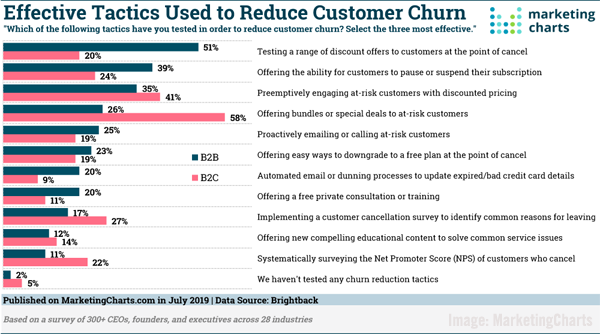
In the following randomly-ordered list, we’ll look at five B2B brands that are innovating with customer-pleasing digital experiences.
#1 IBM — IBM Industries Magazine

IBM publishes both a print and digital version of a magazine, with its award-winning
Industrious quarterly publication, featuring the top content from IBM Industries blog combined with exclusive insight from a variety of industry influencers.
Industrious was the winner of the Best Content Marketing Campaign at the B2B Awards USA in 2018, and offers a compelling example of how a large B2B firm is delivering great customer experiences. IBM senior vice president of digital sales and chief marketing officer
Michelle Peluso recently offered insight into some of the ways IBM has worked to deliver more agile experiences both internally and on the customer experience front. You can hear her episode of The CMO Podcast
here. [bctt tweet="“Client and customer needs are changing at a very rapid pace. We want to make sure IBM is interacting with the people who use our systems, software and services—not just the person making the purchase decisions.” @MichelleaPeluso" username="toprank"] Adding relevant influencer content is a proven method to drive engagement, build trust, and create digital experiences that are truly interesting and helpful. [bctt tweet="“It’s not enough to simply make people aware of our brands — we need to instill an immediate sense of credibility, so that trust is being established in the very first interactions.” — Nick Nelson @NickNelsonMN" username="toprank"]
#2 3M — Science Champions Podcast
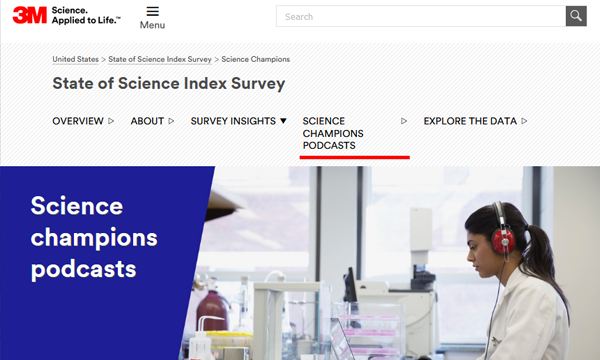
At TopRank Marketing we are B2B influencer marketing specialists, and have recently worked to feature influencers in our client
3M’s Champions of Science series of podcasts. Recent industry experts appearing on
Champions of Science have included Professor Stephen Curry, Department of Life Sciences at Imperial College London, Dr. Suze Kundu, Materials Chemist and Science Presenter, Chris Gammell, Principal, Analog Life, LLC, and Matt Hartings, Associate Professor of Chemistry at American University. Using podcasting can be a great way to up your customer experience game, and we’ve recently taken a look at how B2B marketers can promote podcasts, and have also gathered together an industry-leading list of top marketing-related podcasts, which you can find here:
[bctt tweet="“If you’re at an enterprise-level organization, you have a built-in audience. Encourage your employees to listen to each episode and share it with their social networks.” — Joshua Nite @NiteWrites" username="toprank"]
#3 Businessolver — 2019 State of Workplace Empathy
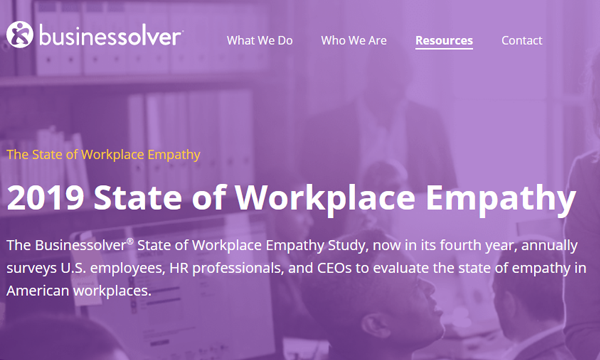
Employee benefits administration technology firm Businessolver sought to connect with customers through conducting a study of empathy in the workplace, causing professionals to take a close look at what has recently been seen as the rising importance of empathy among workers in all fields. Businessolver's
2019 State of Workplace Empathy study highlights why workplace empathy should be an important part of company efforts, offering an online asset that can be cited and used by customers and their firms. [bctt tweet="“93 percent of employees say they're more likely to stay with an empathetic employer.” @businessolver" username="toprank"] At this year’s Cannes Lions International Festival of Creativity, greater incorporation of empathy and intuition in marketing processes was seen as a key trend for 2020, along with learning to better recognize the individuals behind the data. Take a look at more in “
6 Cannes Revelations About B2B Marketing in 2020.” [bctt tweet="“Content marketing requires putting the empathy you have for your audience to a constructive purpose.” — Joshua Nite @NiteWrites" username="toprank"]
#4 Marketo — Guide to Lead Generation
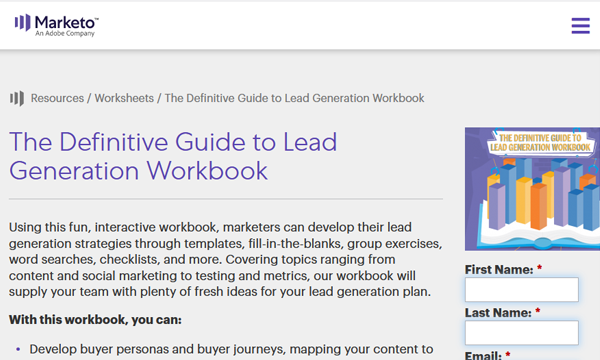
Each year marketing software firm Marketo creates a
Guide to Lead Generation, with helpful insights for customers made available on an array of easy-to-access social media platforms including Facebook, LinkedIn, SlideShare, and Google, as well as the firm's own site. [bctt tweet="“We live in a hyperconnected world where our brands aren’t controlled by us anymore. They’re controlled by our customers. The brand is being defined by the buyer.” — Marketo CEO @nstevenlucas" username="toprank"] Offering helpful digital assets is just one of many successful methods to deliver great customer experiences. We've explored numerous additional ways savvy B2B marketers can offer memorable customer experiences in these recent articles:
[bctt tweet="“If your lead gen efforts aren’t connecting, start by getting a more accurate picture of your buying audience. Use social listening. Ask them questions. Talk to sales and customer service to refine your personas.” — Joshua Nite @NiteWrites" username="toprank"]
#5 Emerson — We <3 STEM / 2019 STEM Survey
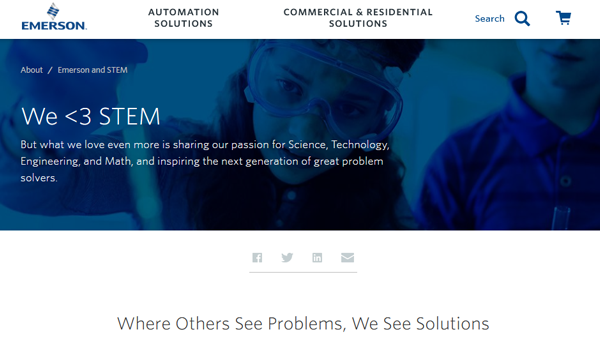
Global technology and engineering firm Emerson has worked to increase the next generation’s interest in Science, Technology, Engineering, and Math (STEM), and has conducted and released its
2019 STEM Survey. Emerson CMO
Kathy Button Bell recently shared some of the innovative initiatives the company is taking to build successful customer experiences, in an
interview with Drew Neisser of AdAge. “Empowering individuals of all ages and backgrounds with the tools necessary to thrive in STEM is a crucial step in solving the growing talent gap across several key industries,” Bell recently told
Power Engineering. “We have long been dedicated to fostering a culture at Emerson that attracts and advances women through a variety of initiatives, including our 4,000-member Women in STEM group, which provides support and mentoring for our female engineers globally,” Bell added. [bctt tweet="“To raise new questions, new possibilities, to regard old problems from a new angle, requires creative imagination and marks real advance in science.” — Albert Einstein" username="toprank"]
How To Deliver Great Customer Expectations
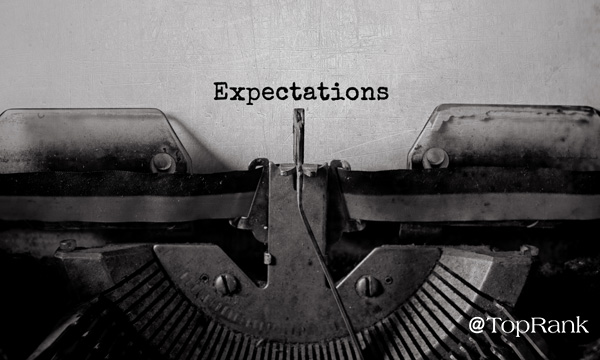
When it comes to delivering great customer expectations, IBM, 3M, Businessolver, Marketo, and Emerson have given us five examples of what can be done with award-winning effort, sizable resources, and an abundance of time. Considering the extensive effort required to produce top-quality customer experiences today, many B2B brands are turning to professional agency help from firms such as TopRank Marketing, the only B2B Marketing agency offering influencer marketing as a top capability in Forrester’s most recent “
B2B Marketing Agencies, North America, Q1 2019” report. You can also learn more on these subjects by joining us at upcoming speaking events and conferences. Our CEO
Lee Odden will be speaking at Content Marketing World next week, where on September 3 he'll be presenting "
How to Develop a B2B Influencer Marketing Program That Actually Works" with
Amisha Gandhi of SAP, and a solo session on September 4 exploring "
Content Marketing Fitness - 10 Exercises to Build Your Marketing Beach Body." Our Senior Director of Digital Strategy
Ashley Zeckman will also be speaking at Content Marketing World, in "
Guardians of Content Vol 1: How to Scale B2B Influencer Content to Save the Galaxy."
The post 5 B2B Brands Delivering Great Customer Experiences appeared first on Online Marketing Blog - TopRank®.

Article Source:
http://bathseoexpert.blogspot.com/2019/08/5-b2b-brands-delivering-great-customer.html

 In the following randomly-ordered list, we’ll look at five B2B brands that are innovating with customer-pleasing digital experiences.
In the following randomly-ordered list, we’ll look at five B2B brands that are innovating with customer-pleasing digital experiences.
 IBM publishes both a print and digital version of a magazine, with its award-winning
IBM publishes both a print and digital version of a magazine, with its award-winning  At TopRank Marketing we are B2B influencer marketing specialists, and have recently worked to feature influencers in our client
At TopRank Marketing we are B2B influencer marketing specialists, and have recently worked to feature influencers in our client  Employee benefits administration technology firm Businessolver sought to connect with customers through conducting a study of empathy in the workplace, causing professionals to take a close look at what has recently been seen as the rising importance of empathy among workers in all fields. Businessolver's
Employee benefits administration technology firm Businessolver sought to connect with customers through conducting a study of empathy in the workplace, causing professionals to take a close look at what has recently been seen as the rising importance of empathy among workers in all fields. Businessolver's  Each year marketing software firm Marketo creates a
Each year marketing software firm Marketo creates a  Global technology and engineering firm Emerson has worked to increase the next generation’s interest in Science, Technology, Engineering, and Math (STEM), and has conducted and released its
Global technology and engineering firm Emerson has worked to increase the next generation’s interest in Science, Technology, Engineering, and Math (STEM), and has conducted and released its  When it comes to delivering great customer expectations, IBM, 3M, Businessolver, Marketo, and Emerson have given us five examples of what can be done with award-winning effort, sizable resources, and an abundance of time. Considering the extensive effort required to produce top-quality customer experiences today, many B2B brands are turning to professional agency help from firms such as TopRank Marketing, the only B2B Marketing agency offering influencer marketing as a top capability in Forrester’s most recent “
When it comes to delivering great customer expectations, IBM, 3M, Businessolver, Marketo, and Emerson have given us five examples of what can be done with award-winning effort, sizable resources, and an abundance of time. Considering the extensive effort required to produce top-quality customer experiences today, many B2B brands are turning to professional agency help from firms such as TopRank Marketing, the only B2B Marketing agency offering influencer marketing as a top capability in Forrester’s most recent “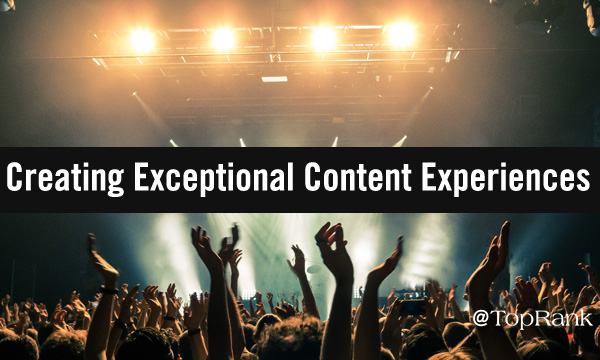

 [bctt tweet="A memorable experience goes a long way. - @AmishaGandhi on raising the bar for content experiences #CMWorld" username="toprank"]
[bctt tweet="A memorable experience goes a long way. - @AmishaGandhi on raising the bar for content experiences #CMWorld" username="toprank"]
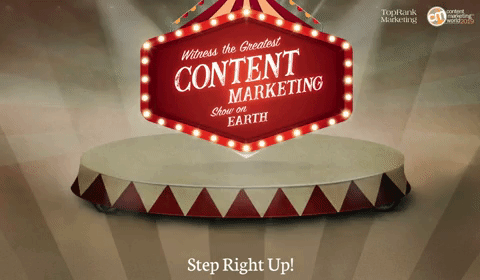
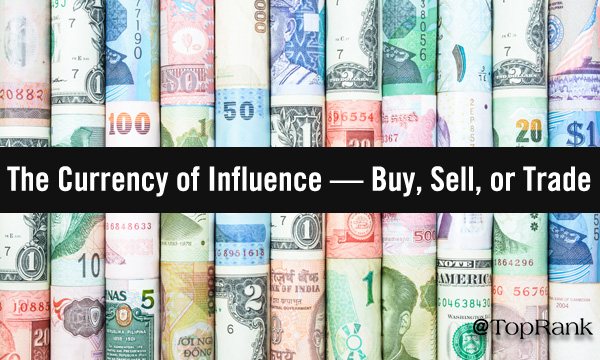
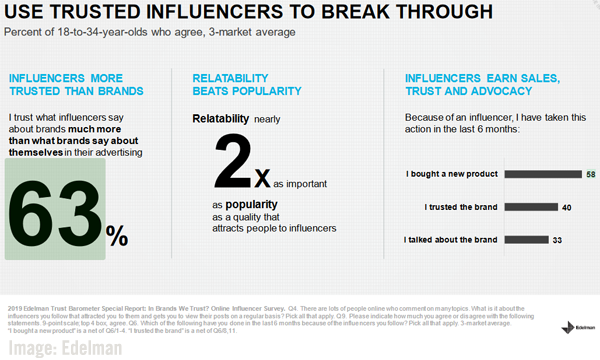 As the internet has matured since its 1991 creation, networking between people around the world has expanded to truly astounding heights, helping make wonderful projects and partnerships happen. [bctt tweet="It’s not about who has the most followers, or the gaudiest personal brand. It’s about who resonates most with your specific customers and prospects. — Nick Nelson @NickNelsonMN" username="toprank"] By learning the importance of influence, how best to incorporate it into your own life and marketing, and how to deal with some of its primary challenges, B2B marketers and brands can harness the power of influence and reach new levels of business and personal success. Whether you call it influence, networking pull, or professional persuasion, connecting with successful people in your industry will bolster your own efforts both today and long into the future.
As the internet has matured since its 1991 creation, networking between people around the world has expanded to truly astounding heights, helping make wonderful projects and partnerships happen. [bctt tweet="It’s not about who has the most followers, or the gaudiest personal brand. It’s about who resonates most with your specific customers and prospects. — Nick Nelson @NickNelsonMN" username="toprank"] By learning the importance of influence, how best to incorporate it into your own life and marketing, and how to deal with some of its primary challenges, B2B marketers and brands can harness the power of influence and reach new levels of business and personal success. Whether you call it influence, networking pull, or professional persuasion, connecting with successful people in your industry will bolster your own efforts both today and long into the future.
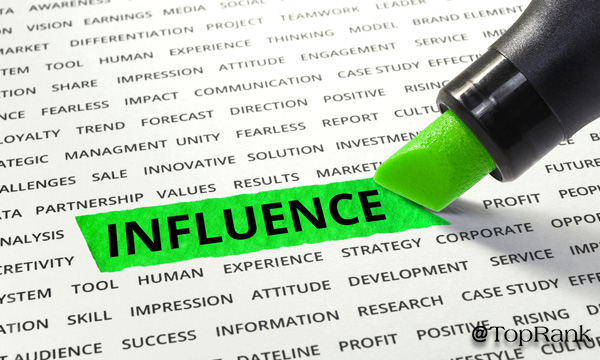 Successfully wielding online influence today puts the world at your fingertips. As with gold or paper money, the currency of influence can be earned, accumulated, spent, traded, or used towards philanthropic causes. When influence is willingly shared it has the special quality of creating other new introductions and connections, setting in motion a sphere of professional networking and knowledge that can keep growing as long as you put in the effort to understand and maintain it. [bctt tweet="Working with influencers is about building solid relationships that last over time, not just a summer fling. — Ashley Zeckman @azeckman" username="toprank"] Just as influence comes in vastly varying degrees, so to do influencers, who can take the form of micro-influencers or other specialty varieties.
Successfully wielding online influence today puts the world at your fingertips. As with gold or paper money, the currency of influence can be earned, accumulated, spent, traded, or used towards philanthropic causes. When influence is willingly shared it has the special quality of creating other new introductions and connections, setting in motion a sphere of professional networking and knowledge that can keep growing as long as you put in the effort to understand and maintain it. [bctt tweet="Working with influencers is about building solid relationships that last over time, not just a summer fling. — Ashley Zeckman @azeckman" username="toprank"] Just as influence comes in vastly varying degrees, so to do influencers, who can take the form of micro-influencers or other specialty varieties.  Who really has influence and who is merely claiming to? Building influence is time-consuming, so why should I even bother? There’s little doubt that celebrity influencers have faced increasing skepticism, but the process of finding true B2B industry experts who are hyper-relevant to your industry is as important as ever, and we’ve looked at how to go about this in several recent pieces:
Who really has influence and who is merely claiming to? Building influence is time-consuming, so why should I even bother? There’s little doubt that celebrity influencers have faced increasing skepticism, but the process of finding true B2B industry experts who are hyper-relevant to your industry is as important as ever, and we’ve looked at how to go about this in several recent pieces:
 Measuring influence has changed over time and will continue to evolve. Will the ability to achieve and grow online influence remain fully accessible to everyone, or will those holding little influence and clout face insurmountable obstacles in the future? Will a backlash against celebrity influencers — or perhaps even
Measuring influence has changed over time and will continue to evolve. Will the ability to achieve and grow online influence remain fully accessible to everyone, or will those holding little influence and clout face insurmountable obstacles in the future? Will a backlash against celebrity influencers — or perhaps even  Whether you call it influencer marketing or working with top relevant experts in your industry, the quality of influence itself has a timeless and unmistakable power to drive successful marketing campaigns. [bctt tweet="When identifying and qualifying influencers, go beyond what the numbers are and see what that data really means. — Amisha Gandhi @AmishaGandhi" username="toprank"] Here are three articles with examples of how influencer marketing has helped B2B firms achieve strong results:
Whether you call it influencer marketing or working with top relevant experts in your industry, the quality of influence itself has a timeless and unmistakable power to drive successful marketing campaigns. [bctt tweet="When identifying and qualifying influencers, go beyond what the numbers are and see what that data really means. — Amisha Gandhi @AmishaGandhi" username="toprank"] Here are three articles with examples of how influencer marketing has helped B2B firms achieve strong results:










